A Look at the City fo Villains Brute Archetype for new players
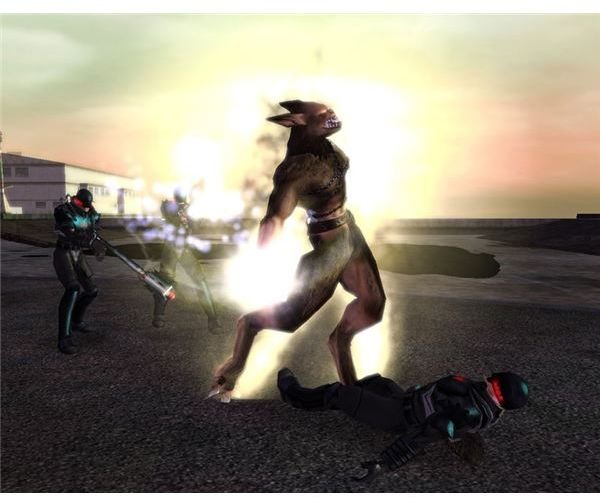
If you haven’t already read through my Introduction to the City of Heroes Archetype please do and remember, if you are unfamiliar with the terms I use here, please read through the MMO Dictionary.
The Brute
Take the Scrapper, lower its base damage, give it more hit points, and increase the strength of its defenses, and you’ve got the Brute. Additionally, the Brute will gain the ability to directly draw the enemy’s attention away from his or her allies through a variety of taunts. To that extent, the Brute has the option of filling two different roles while teaming. They can either choose to go for a more Scrapper-like play style, where damaging and defeating enemies quickly is key, or they can choose to soak up damage while their teammates concentrate on offense. Depending on your team’s needs you might be playing both roles, so expect a bit of flexibility.
The Brute Inherent
It is true that the Brute starts off with a lower damage potential than the Scrapper. However, that’s where Fury comes into play. Underneath your character’s health and endurance bars there will be a third row called the ‘Fury bar.’ The longer your Brute fights the more filled this bar becomes. As the bar grows the Brute’s damage also increases to a maximum of 3x its base, surpassing the Scrapper by a good margin (before Critical Hit). Additionally, while the Scrapper’s inherent triggers randomly, as long as the Brute continues to fight this damage bonus will stick around.
The caveat is that Fury goes away rather quickly outside of a fight. Even a few seconds can be enough to lower your Fury bar significantly. This quick Fury degeneration lends itself to continual fighting just to keep the high damage levels, so be aware of your limits. It doesn’t help to have a full Fury bar if you become overwhelmed quickly.
So What Sets Can I Choose From?
Brute Primary Sets
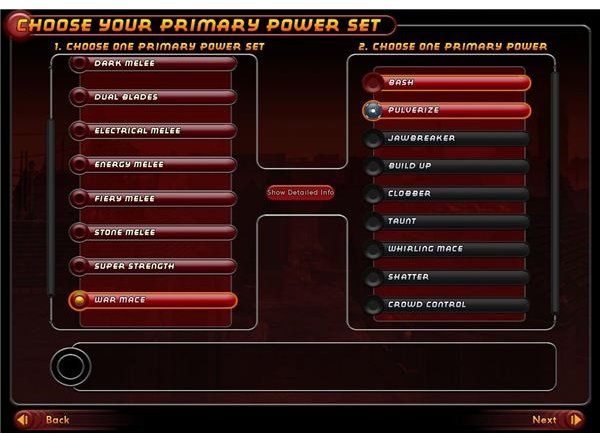
- Battle Axe
- Dark Melee
- Dual Blades
- Electrical Melee
- Energy Melee
- Firey Melee
- Stone Melee
- Super Strength
- War Mace
- Claws
Brute Secondary Sets
- Dark Armor
- A Damage Resistance set that has some potent Mitigation and minor Defense
- Electric Armor
- Almost entirely a Damage Resistance set with a minor Mitigation power
- Energy Aura
- Defensive set with some minor Damage Resistance and Mitigation
- Firey Aura
- A Damage Resistance set that offers a boosted damage potential alongside some Mitigation
- Invulnerability
- A Resistance set that also has some Defense and one Mitigation power
- Shield Defense
- Mainly a Defensive set, it also includes some minor Damage Resistance and Mitigation
- Can not be used with the following primary sets: Claws and Dual Blades
- Stone Armor
- A mixed bag set that has some of the strongest defenses at a cost to speed and damage
- Super Reflexes
- A Defensive set with some Damage Resistance as you lose health
- Willpower
- A mixed bag set that doesn’t excel in any one style of defense, but is still strong overall
That’s Great, but How do I Choose?
With the Brute we’ve come to the first choice regarding the role you are to play. Do you want more direct survivability or more damage? Each secondary set will have their individual strengths and weaknesses and the choice you make will somewhat determine what teams expect of you. A damaging character will tend to play very much like a Scrapper, moving quickly from fight to fight, while a defensive centric Brute might spend more time drawing the attention of enemies rather than concentrating on defeating them. For our purposes the primary sets are still equal in strength.
If you are looking for a set that is more about keeping your allies alive a good rule of thumb is this: choose a set that contains powers that represent all three defensive styles. This seems to allow for better survivability. Alternatively, When making a Scrapper-like Brute, examine some of the non-defense powers that are included in the set. These powers are designed to enhance the Brute’s abilities and, in some cases, that means increasing their damage output or attack rate. Finally, know if your set has an endurance recovery power. Since every single defensive set includes multiple toggles that continually drain your endurance, the ones that also include endurance recovery or endurance discount powers will better help you keep going.
The Stalker

Arguably considered the Villain’s Scrapper, the Stalker is a high damage dealing class that primarily focuses on melee attacks with a defensive secondary. For this reason it is recommended that new villains begin their evil ways with this AT. However, there are a couple of important differences to note about the Stalker when compared to the Scrapper. Overall a Stalker is less powerful, all other things equal, as their attacks do less damage. Additionally, a Stalker has fewer hit points, making them less survivable in toe-to-toe fights.
The Stalker Inherent
Unlike the Blaster and Scrapper inherents, which do not require any special considerations to use, the Stalker’s inherent power, Assassination, requires up to two additional abilities for the Stalker’s strength to be fully realized. Furthermore, with at least four different aspects to the power, it is the most complex inherent of the starter ATs.
The first thing any Stalker needs to know is that the initial power in their secondary set will be Hide. As the name suggests, when the power is on, the Stalker can become hidden to everything around them. It is such an important power for the Stalker that you will be told when you are sufficiently stealthy, as the word ‘Hidden’ will appear underneath your health status bar. Anytime you attack while ‘Hidden’ you will deal double damage, similar to the Scrapper’s Critical Hit. Note that once you have been spotted, you won’t be able to become hidden again until a few seconds after the last time you attack or are damaged.
The second power any Stalker should have is the Assassin’s strike power, which will be unavialable until level 6. While ‘Hidden’ a successful hit with the Assassin’s strike attack will deal a tremendous amount of damage. A successful hit will also demoralize surrounding enemies, making them cower in fear and lowering their chance to hit for a short while. Unlike normal attacks, if you attack using the Assassin’s strike power and miss you will remain Hidden and undetected until you are successful or you use a different ability.
So Which Sets Can You Choose From?
Remember those three styles of defense I highlighted for the Scrapper: Defense, Damage Resistance, and Mitigation? For the Scrapper it didn’t particularly matter which style of defense you chose. No one style of defense played to the Scrapper’s strengths, and none are considered much stronger than the remaining two. For the Stalker, however, the story is slightly different. The Stalker finds its strength while hidden, and to become hidden it needs to avoid attacking or being damaged. Note that I said that you didn’t want your Stalker be damaged. Even if an enemy is attacking you, as long as they don’t successfully hit, the Stalker can once again become hidden and gain a significant advantage. Also, the Assassin’s strike power can be interrupted if you are attacked during its animation. Defense will help to ensure your attack finishes successfully. To that extent, Damage Resistance and Mitigation, though equally effective on paper, do not play to the Stalker’s strengths as well as Defensive sets do.
Stalker Primary Sets

- Claws
- Dark Melee
- Dual Blades
- Electrical Melee
- Energy Melee
- Marital Arts
- Ninja Blades
- Spines
- Broadsword
Stalker Secondary Sets
- Dark Armor
- Primarily Damage Resistance
- Electric Armor
- Primarily Damage Resistance
- Energy Aura
- Primarily Defense
- Ninjitsu
- Primarily Defense with some Mitigation powers
- Regeneration
- Primarily Mitigation
- Super Reflexes
- Primarily Defense
- Willpower
- Mixed bag with no concentration on one kind of defense
That’s Great, but How Do I Choose?!
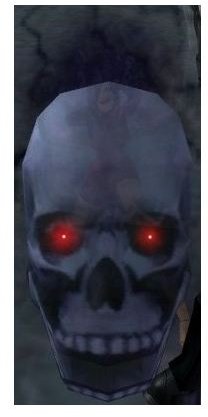
Like I suggested in my previous article, the first time player might benefit from a concept to help determine what your character can do. It will help narrow down the choices until you’ve ended up with something you can enjoy playing for the first 5 or so levels, just to get a feel for the game. However, unlike the Scrapper and Blaster ATs, the Stalker benefits from limiting your choices some. By choosing Energy Aura, Ninjitsu, or Super Reflexes as your secondary set you can give your Stalker a slight advantage over a Damage Resistance or Mitigation set. This does not help with survivability directly, as all the sets are basically equally strong, but it does allow your character to dish out more damage quickly, and an unconscious enemy can’t defeat you.
The Corruptor
The Corruptor AT has the potential of being the most difficult of the introductory archetypes to pick for new players. With a few initial similarities to the Blaster it may seem like another high ranged damage set and it does have some elements of that. However, the Corruptor does less damage when compared to the Blaster, enough that there is a noticeable difference. Additionally, the Corruptor’s secondary is not known for it damaging skills. Instead, its sets are mostly about increasing your allies’ capabilities and decreasing your enemy’s. It is this aspect that makes them comparatively difficult to play.
The Corruptor Inherent
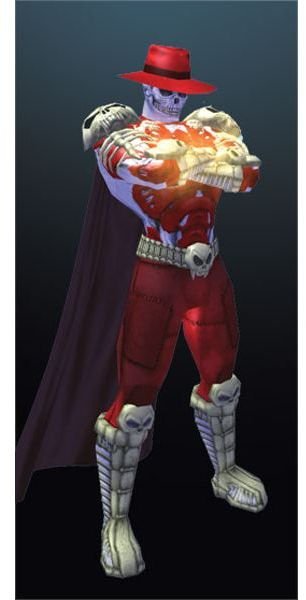
Scourge is very straight forward and is similar to the Scrapper’s Critical Hit with a twist. Where Critical Hit allows the Scrapper to hit for increased damage at random intervals, Scourge has a very specific pattern to it. Once the enemy’s health reaches the halfway point Scourge will begin to activate and its frequency will increase in proportion to the enemy’s lowering health. The fewer hit points the enemy has, the more damage the Corruptor does. While it doesn’t make the Corruptor significantly more powerful in normal fights, it does give them (and their team) a needed edge in prolonged battles with the game’s toughest enemies, where it can sometimes be difficult to finish a long and tiresome fight.
So Which Sets Can You Choose From?
Like the Blaster, the Corruptor’s primary options are basically the same. It’s the secondary options that could cause some issues. Below each of the sets’ names I will give a brief description of what to expect thematically to help with any character concepts you might have, whether the set primarily buffs your allies, debuffs your enemies, or both, and if it specializes in any specific type of buff or debuff.
Corruptor Primary Sets
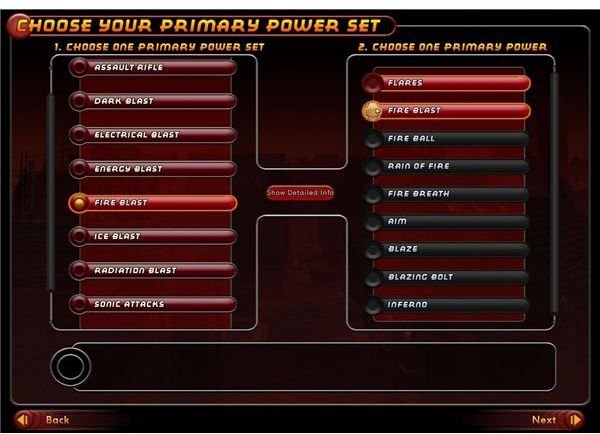
- Archery
- Assault Rifle
- Dark Blast
- Electrical Blast
- Energy Blast
- Fire Blast
- Ice Blast
- Radiation Blast
- Sonic Attacks
Corruptor Seconday Sets
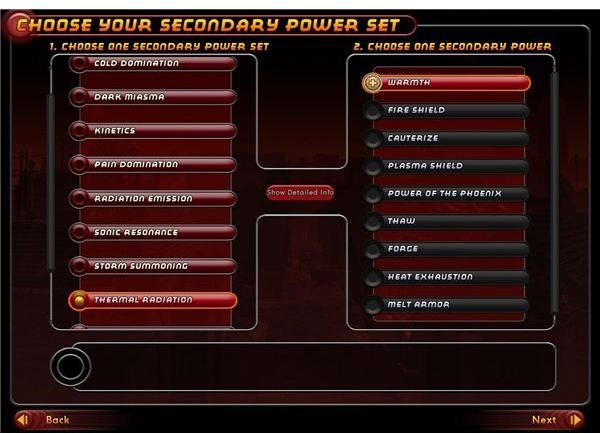
-
Cold Domination
- An icy set the slows you enemy’s attack speed while increasing your allies’ Defense
-
Dark Miasma
- A dark-centric set that delivers a large variety of debuffs
-
Kinetics
- Master of kinetic energy that buffs and debuffing endurance recovery and damage potential
-
Pain Domination
- Increase your allies’ pain threshold with this powerful healing set
-
Radiation Emission
- Control radiation to lower the enemy’s capabilities across the board
-
Sonic Resonance
- Emit high frequency sounds to buff your allies’ and debuff your enemies’ Damage Resistance
-
Storm Summoning
- Control the weather to slow down your enemies and knock them off their feet
-
Thermal Radiation
- A heat-based set with some potent heals and Damage Resistance shields for your allies
-
Traps
- Place a wide viariety of traps to damage and debuff your enemies
-
Trick Arrow
- Shoot arrows tipped with a variety of gadgets to lower your enemies’ capabilities
That’s Great, but How Do I Choose?!
Of the ATs I’ve highlighted, the Corruptor can have the steepest learning curve. Additionally, the secondary you choose does determine the kind of role a potential team will expect you to fulfill. After all, if you choose Pain Domination you’re team will expect you to heal. That is, however, about as much consideration as is needed for this AT. Unlike the Brute, where a high defensive set usually gives up something offensively and vise versa, the Corruptor is not so straight forward. With only one exception (Trick Arrow) each set has at least one buff and one debuff power.
To that extent be aware of the kind of role you want to play, but understand that this is your secondary set. Your primary role as a first time player is still going to be damage. Choose three or four secondaries that work thematically with the primary you want to play, and only then narrow down the choices to one. Finally, I will return to an idea I presented while talking about the Blaster AT. Test out your powers on random enemies before starting a mission to get a feel for what the power does and how you might use it efficiently. Even a few extra seconds will give you enough information to begin to accurately use your powers while soloing or on a team.
A Few Final Hints
If you’re at all interested in City of Heroes here are two additional aspects to the game that you should be aware of (and one personal suggestion).
Enhancement Diversification
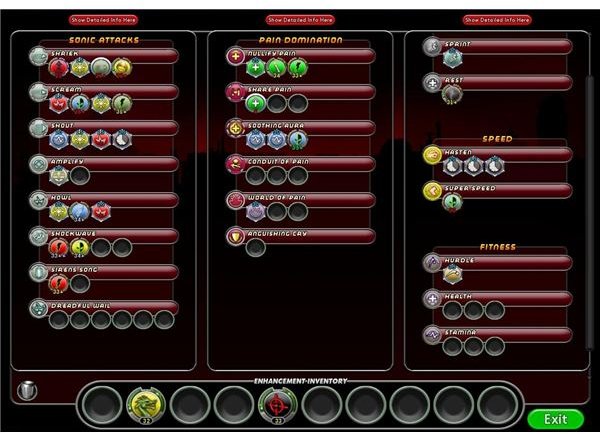
The equipment found in City of Heroes are called Enhancements and they ‘enhance’ your abilities. There is a pretty good explanation of how to use them in the tutorial (which is required for first time players) so you should pay attention while running through. However, there is one aspect to enhancements that is never mentioned anywhere in the game. It is called Enhancement Diversification. Basically it is a limitation on the effectiveness of your enhancements such that slotting more than three of one kind gives a significantly diminished return.
Travel Powers and Stamina
As you level through the game there will be extra powers that you can unlock called “pool powers.” These powers are available to each of the ten basic ATs. Both tricky and important to know about, these powers will give you access to your travel ability and Stamina. The way they work is that, at level 6, the first two powers in each pool are unlocked. At level 14 the third power is unlocked and at level 20 the fourth power is made available. Additionally, you will need one of the first two powers to have access to the third one and two of the pool’s powers to access the fourth (confused yet?). There are four sets of pool powers that are considered ‘travel pool powers.’ They are called Flight, Leaping, Speed and Teleportation. The actual travel power is the third one, so it won’t be unlocked until level 14. Additionally, the Fitness pool power set will include, as its fourth power, Stamina. It is highly recommended that you take Stamina to alleviate the endurance cost of powers.
Mission Architect
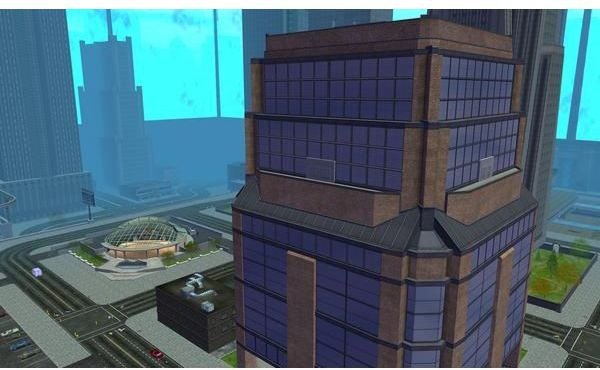
And finally, my personal suggestion for any starting player. In Issue 14 City of Heroes introduced the Mission Architect system. It is a very diverse system that allows players to create their own enemies and their own story arcs for the rest of the player-base to enjoy. Unfortunately, this is not a good system for new characters (whether or not the player behind the computer is new to the game). The normal NPCs found in the game are well balanced and become progressively harder as the player levels up and works through Paragon City or the Rogue Isles. Mission Architect does not have that consideration, as player created enemies are balanced for higher level characters. Though by no means are you barred from Mission Architect I suggest that you avoid the building for your first few levels. This way you will gain some experience with City of Heroes as a whole, and, when you do encounter a custom enemy, it will be a much more fun process.
What it All Boils Down To
There are no right answers. Even within sets there is an incredible amount of variability. That’s what makes City of Heroes so interesting to so many of its players. To say that you should begin with a concept character doesn’t mean that you should always go about creating your hero or villain in that way. In fact, though the five ATs I’ve highlighted are the easiest to learn, that does not mean you can’t start with one of the other five. Many players start with these other ATs and enjoy their time with those characters. In the end it comes down to how much fun you are having playing your hero or villain. These suggestions are here just to get you started on a right foot and to minimize the game’s learning curve as much as possible. With one of the most forgiving death penalties of any MMO don’t be afraid to get in over your head once in a while, it will help you learn your limits. Finally, if you find that you don’t like what you’re playing, well, there are 11 other slots available right away, up to 24 purchasable slots, and a delete button.
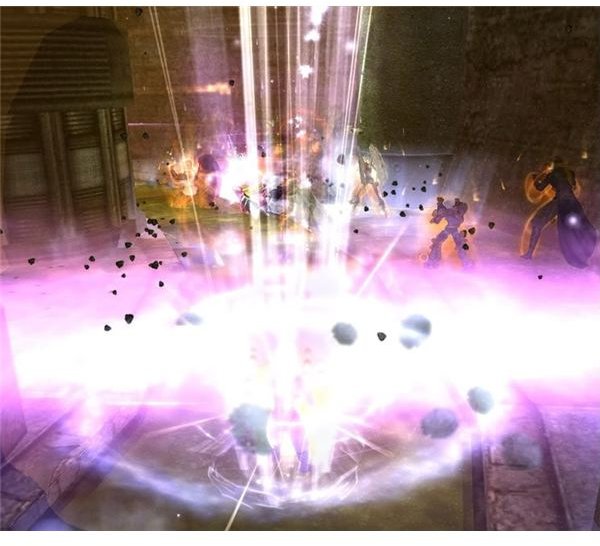
This post is part of the series: City of Heroes/Villains: Choosing your First Archetype Part 1
A closer look at the City of Heroes Archetypes for beginners. Part one covers the hero ATs, the Blaster and Scrapper, and gives some general hints to help you get started on creating your first member of Paragon City.
